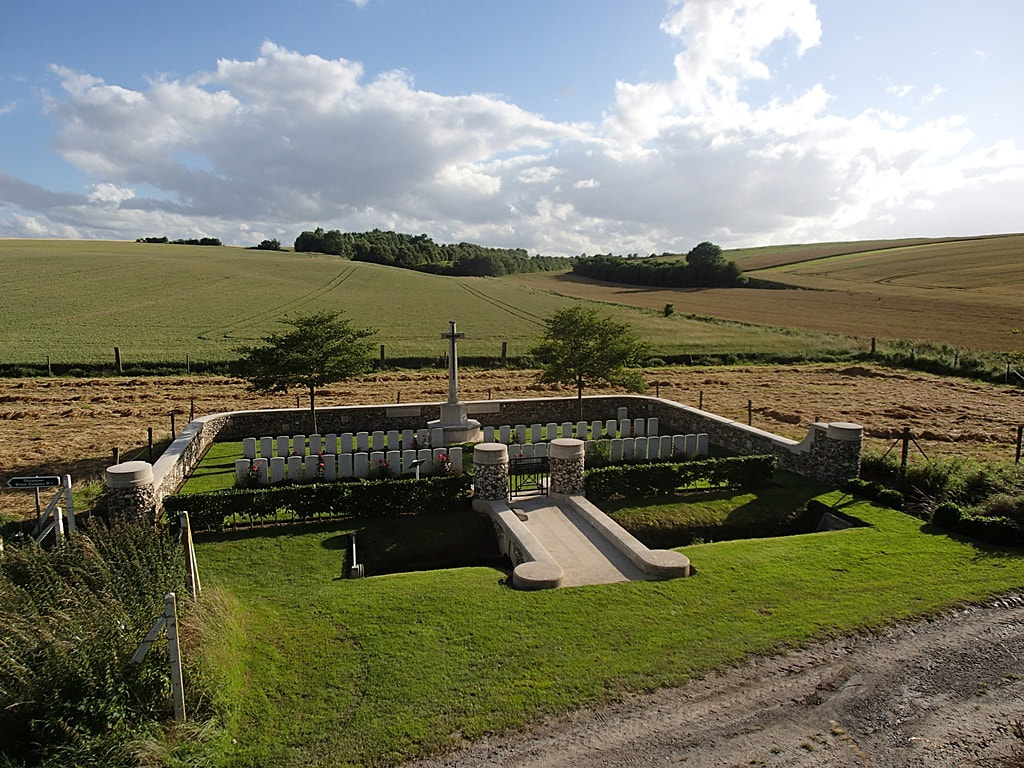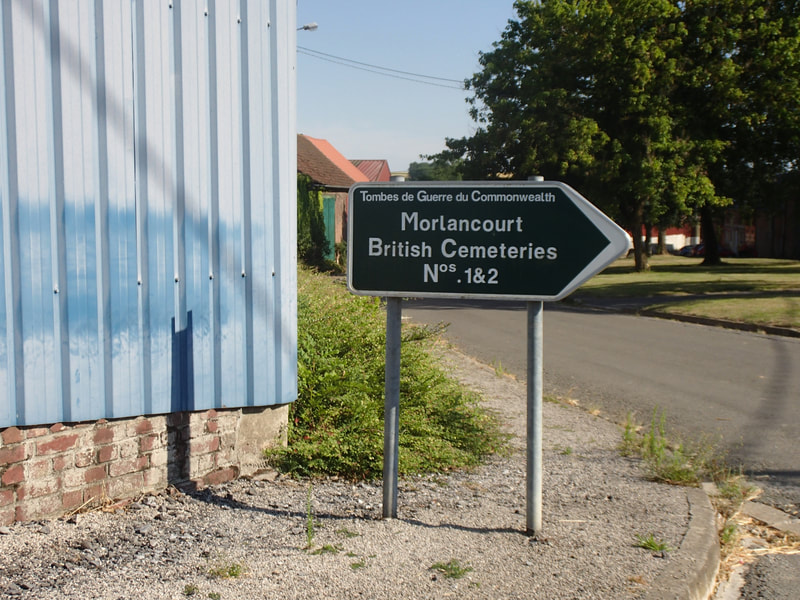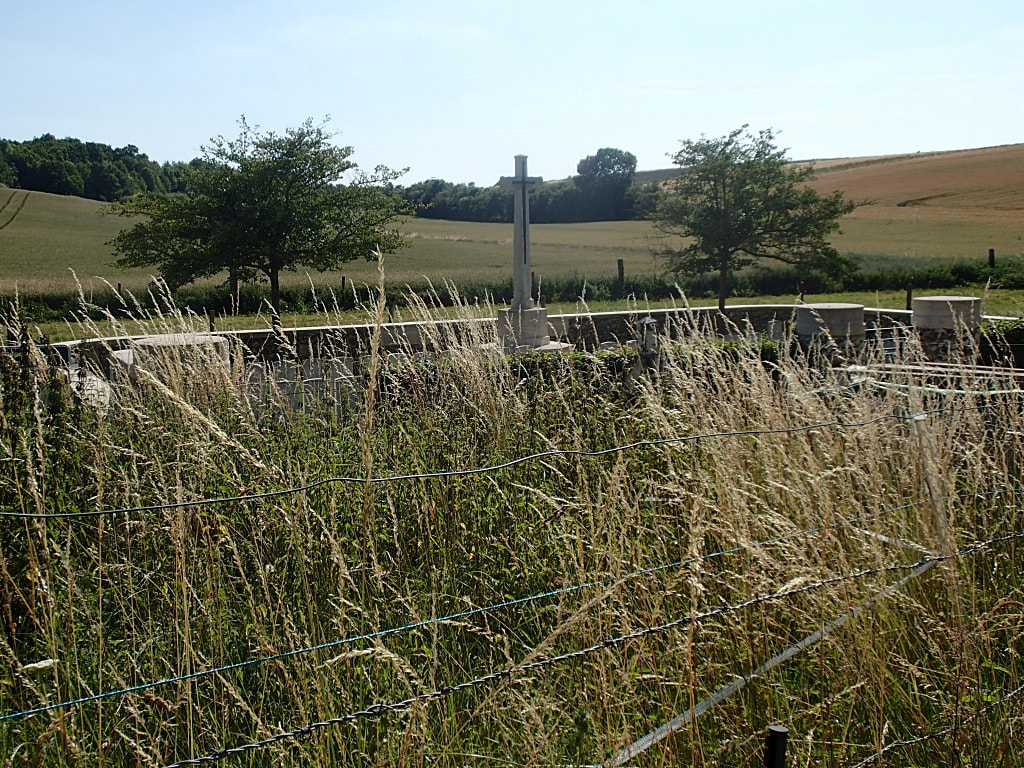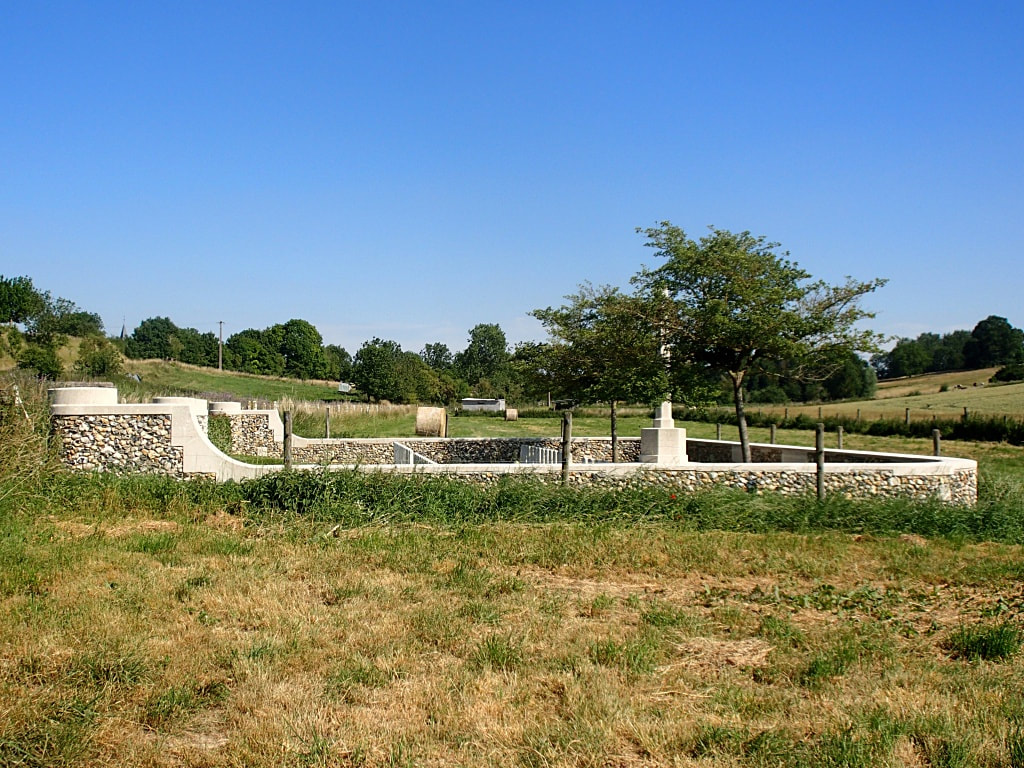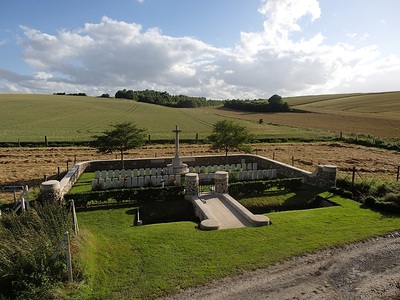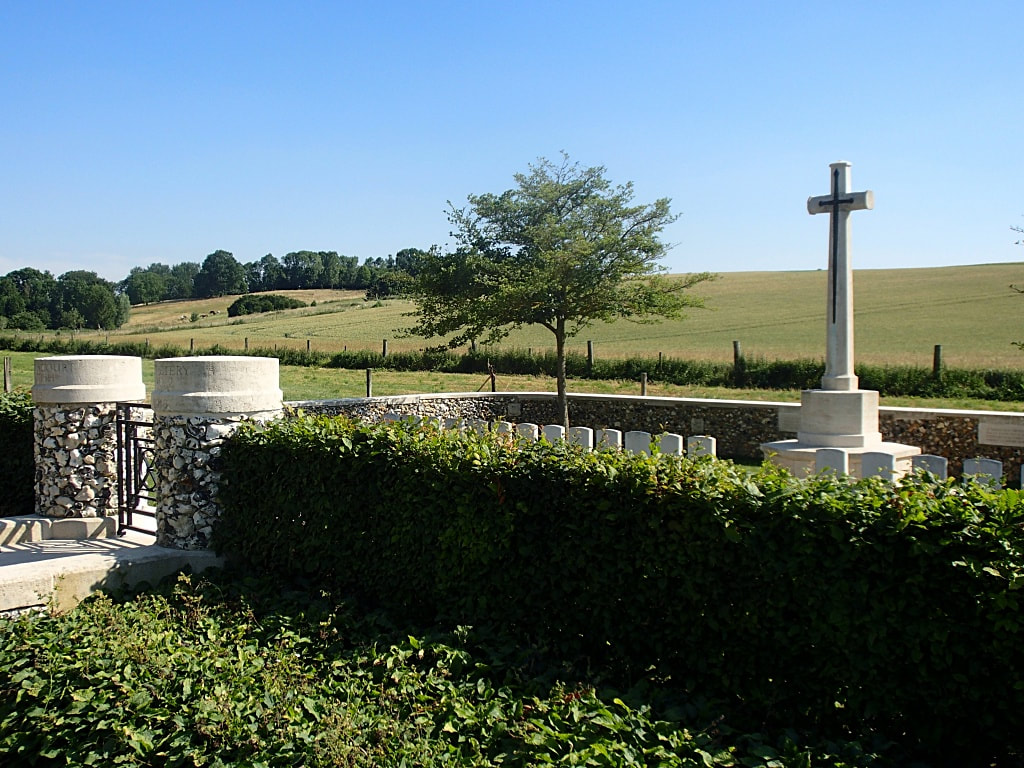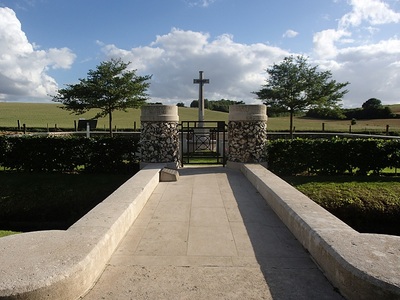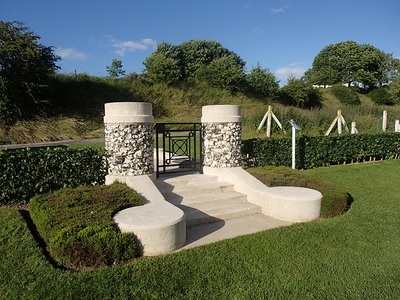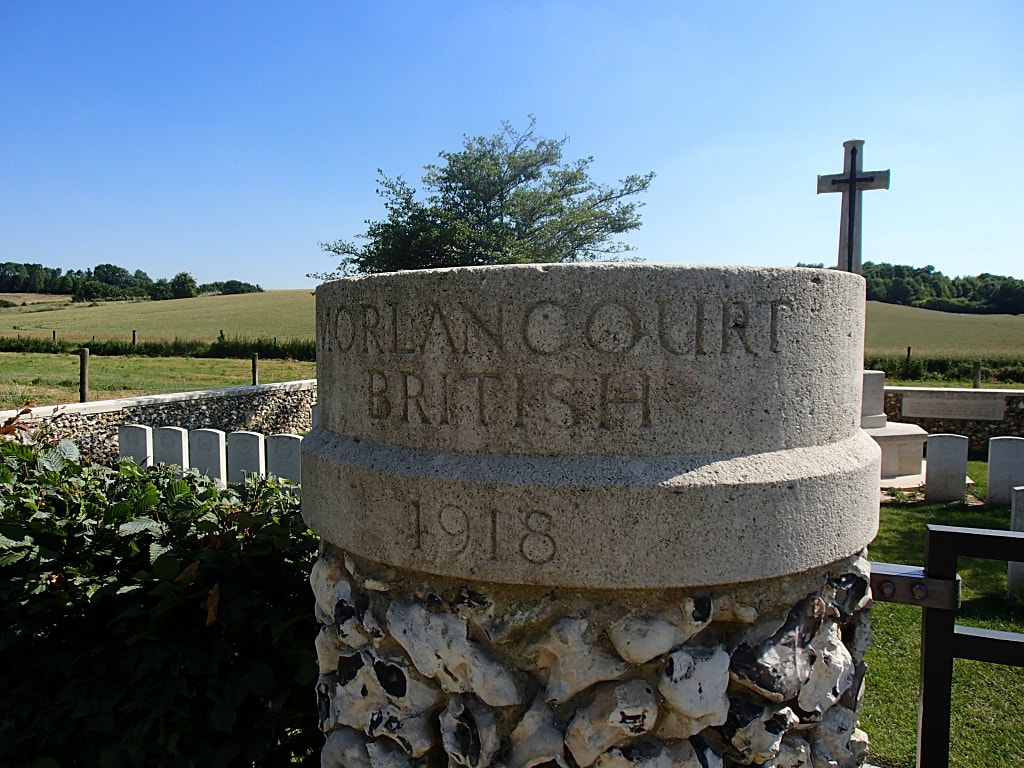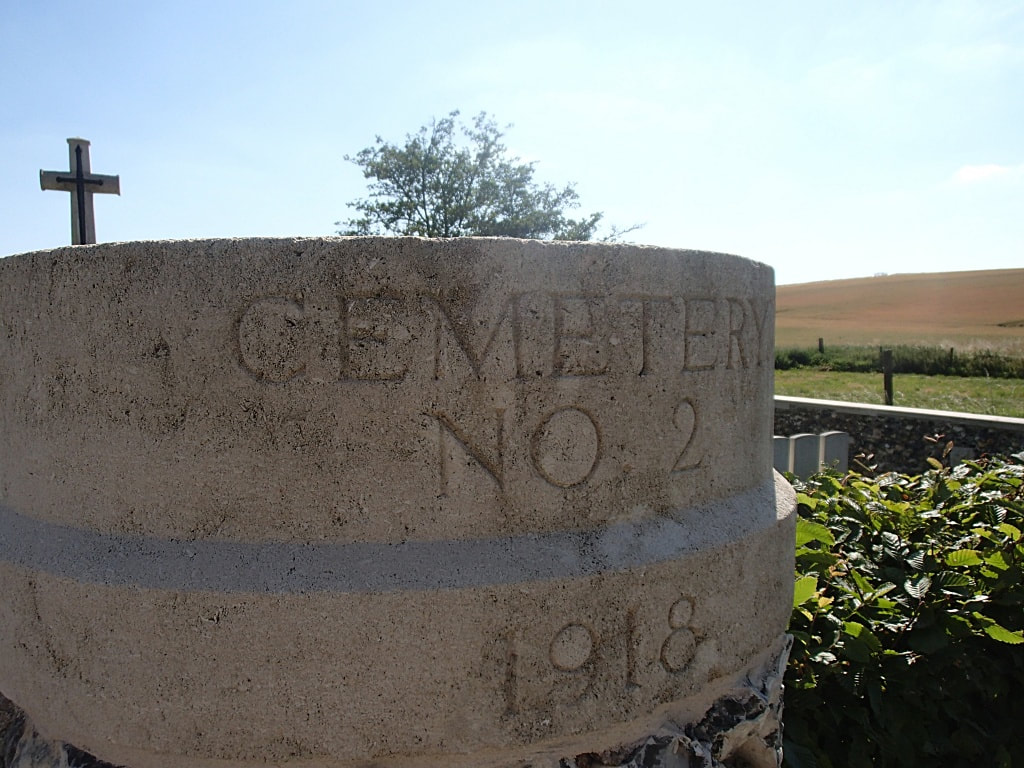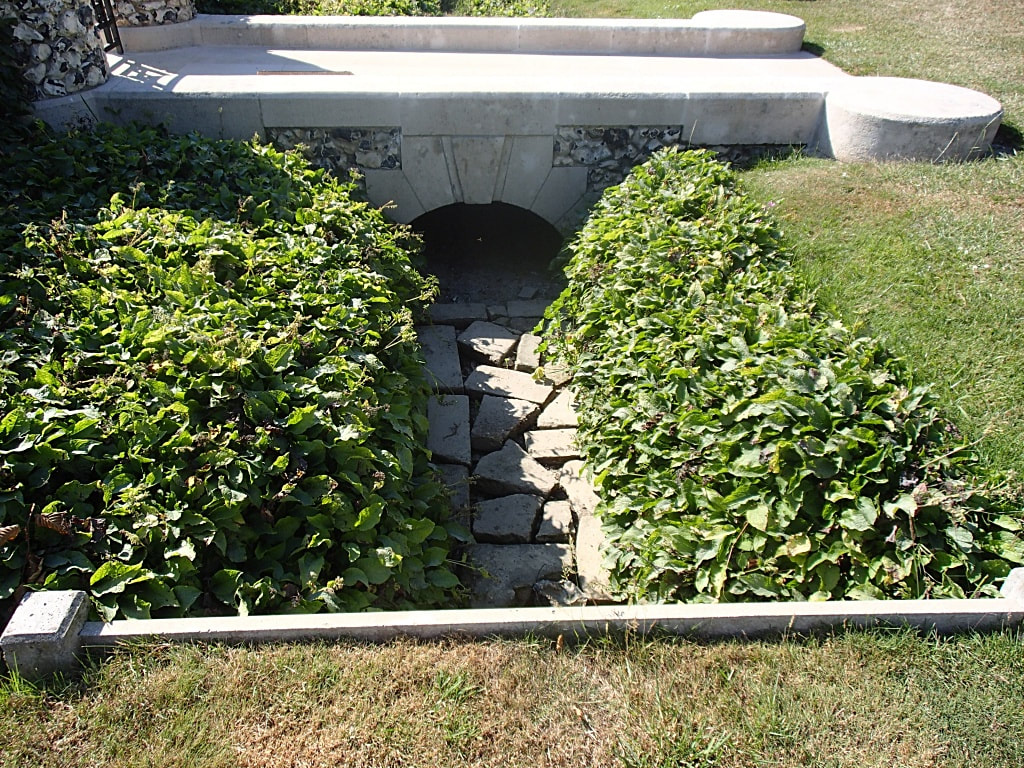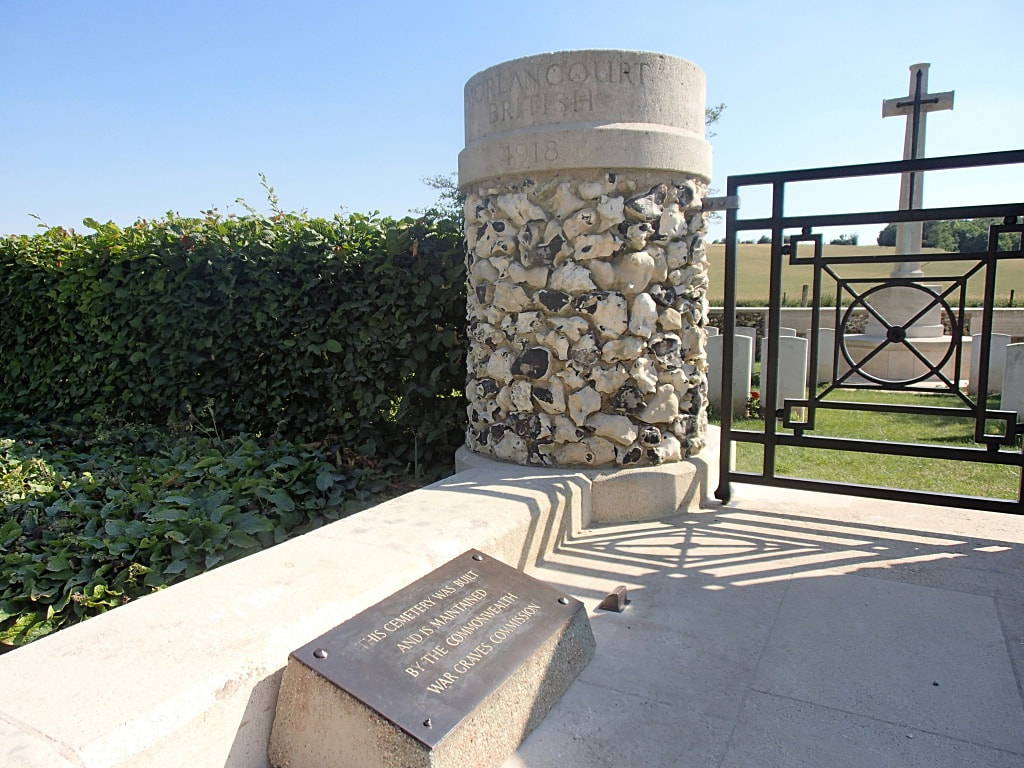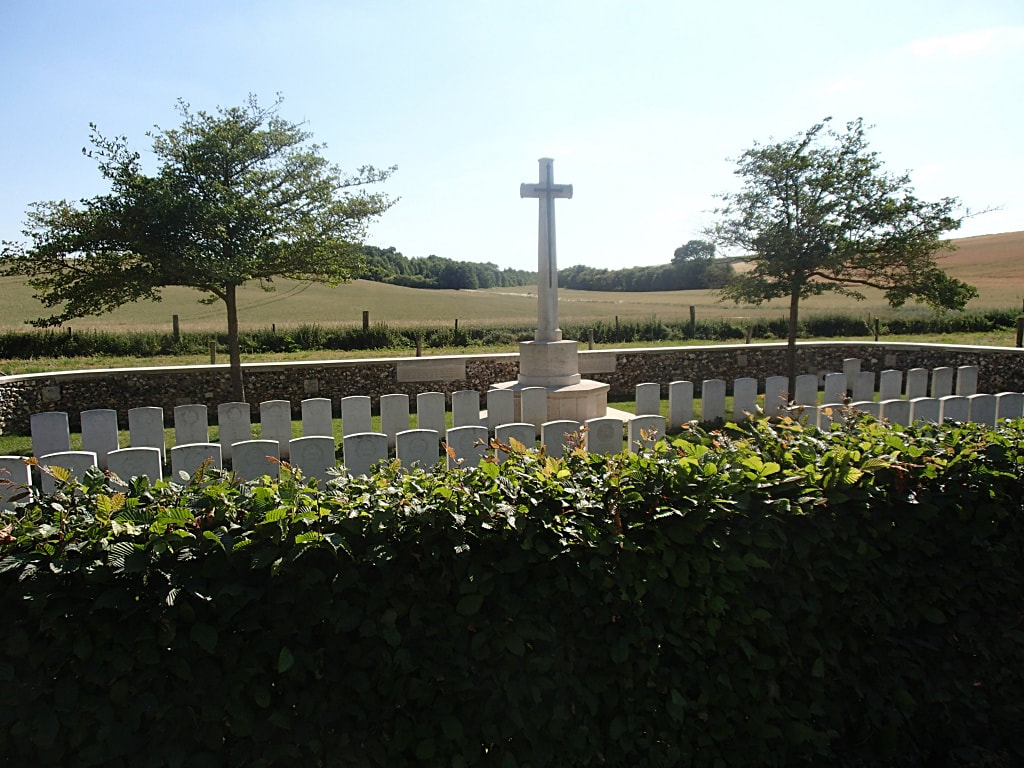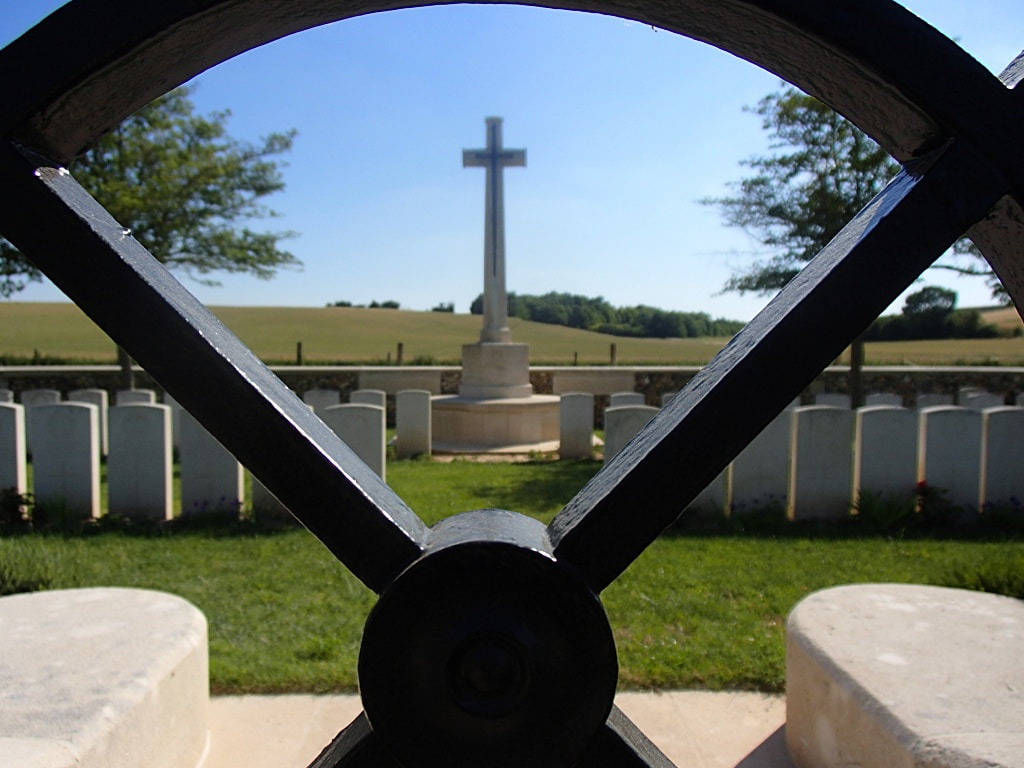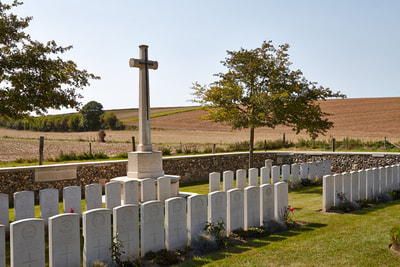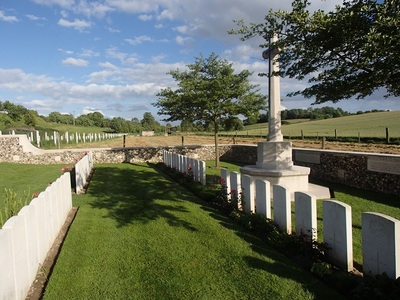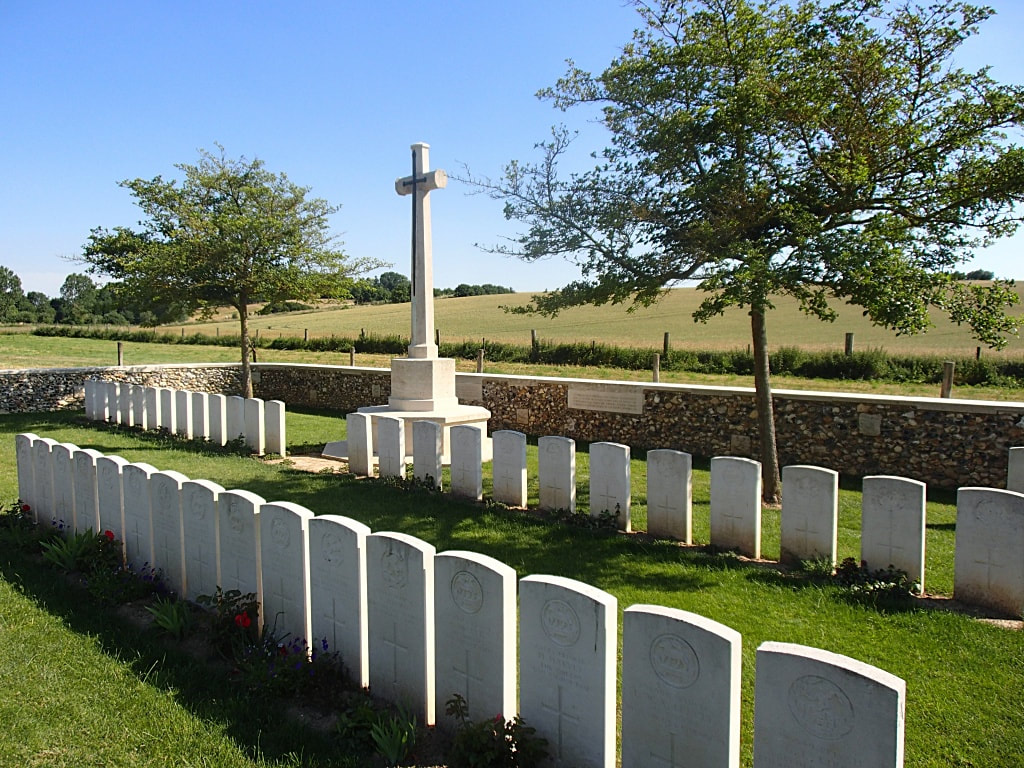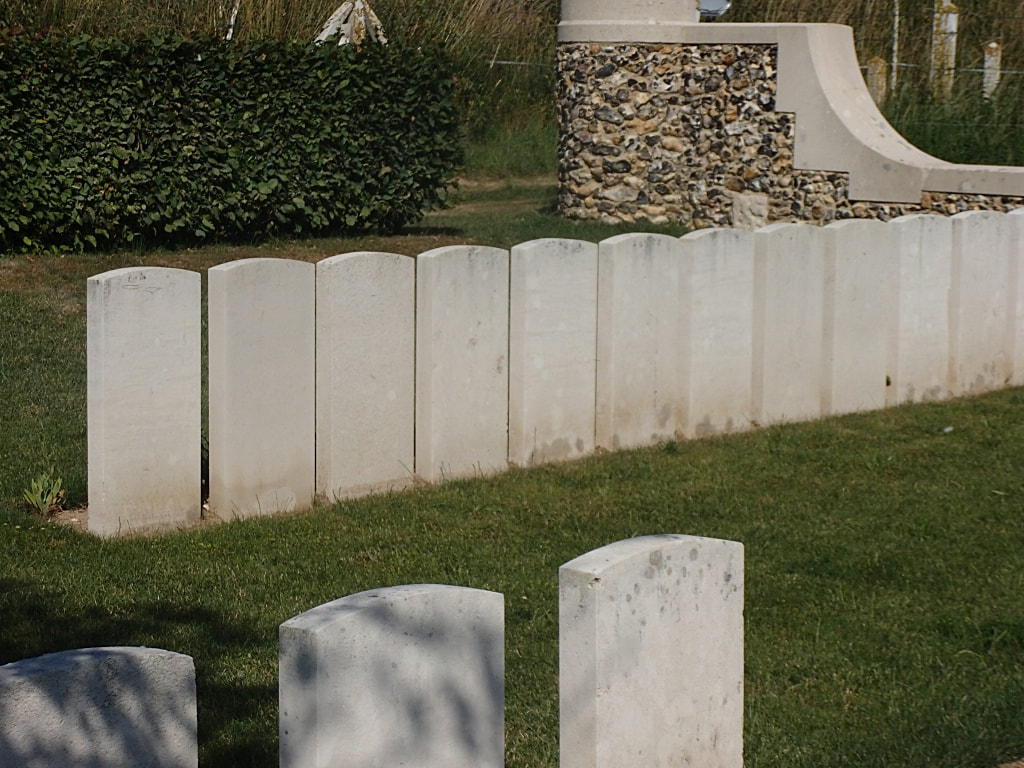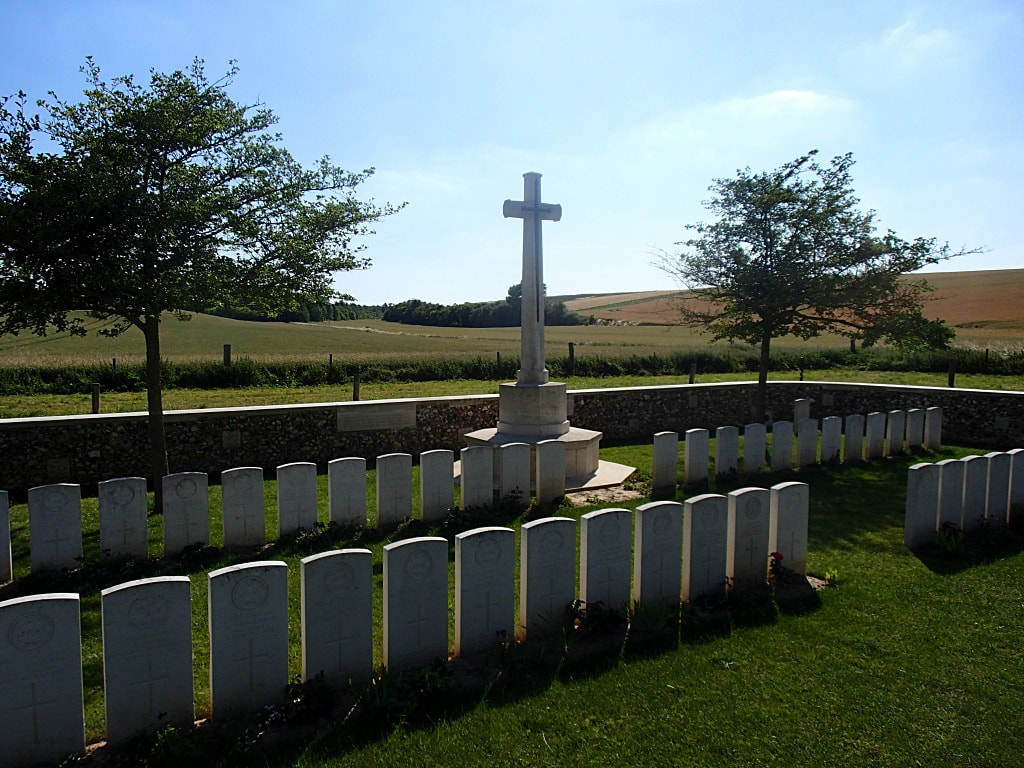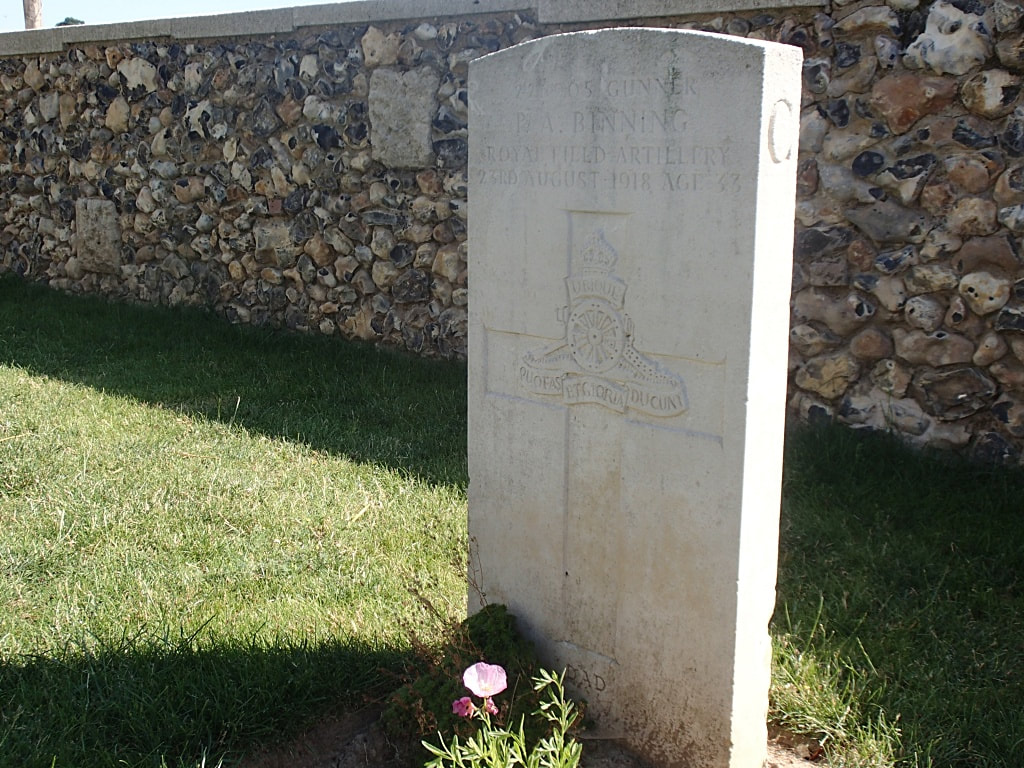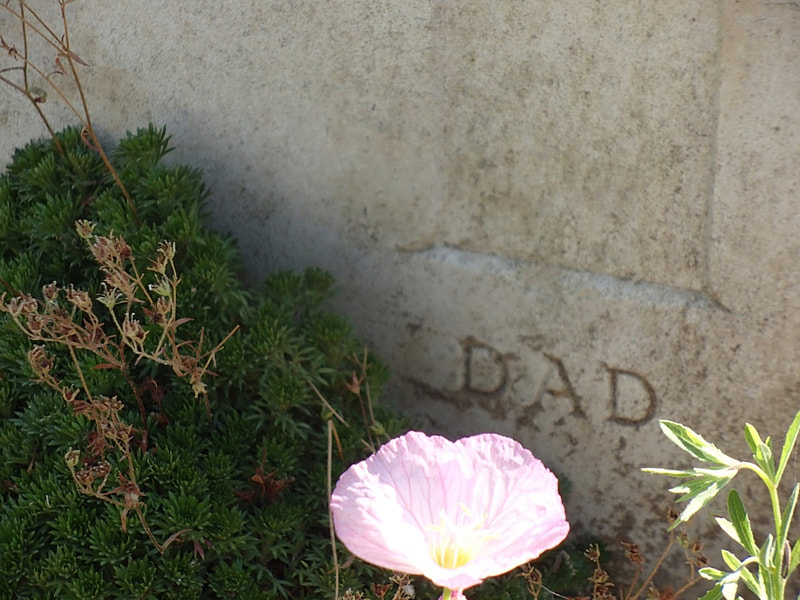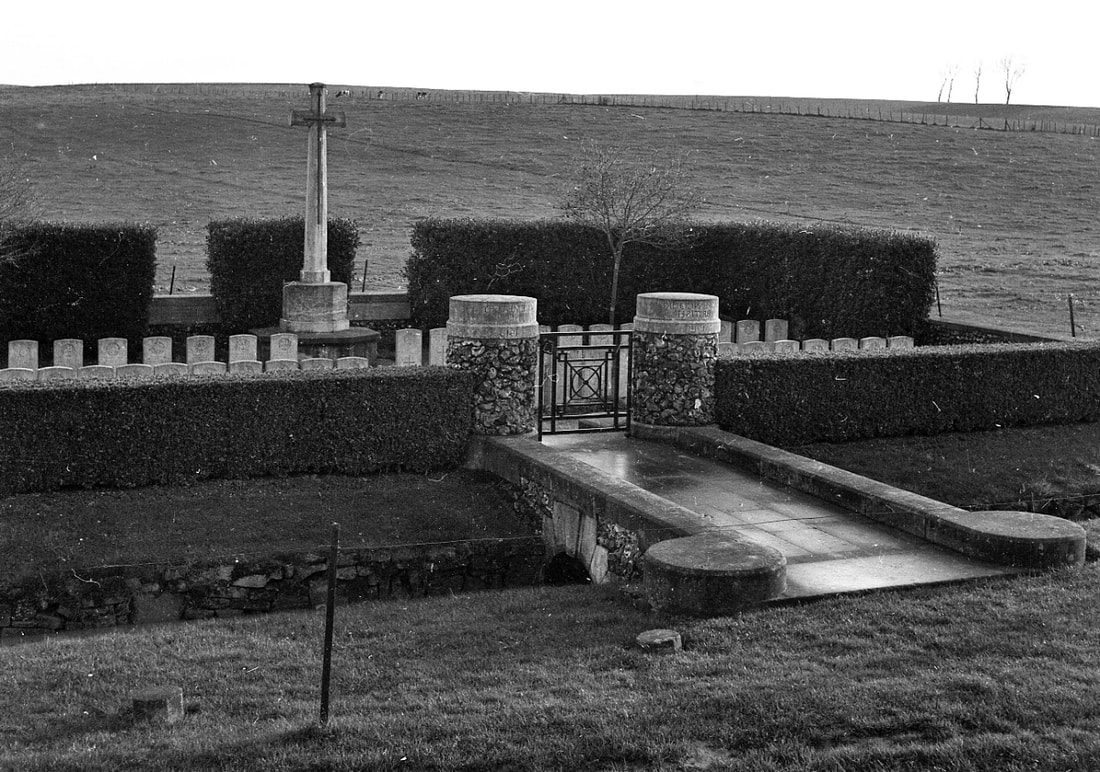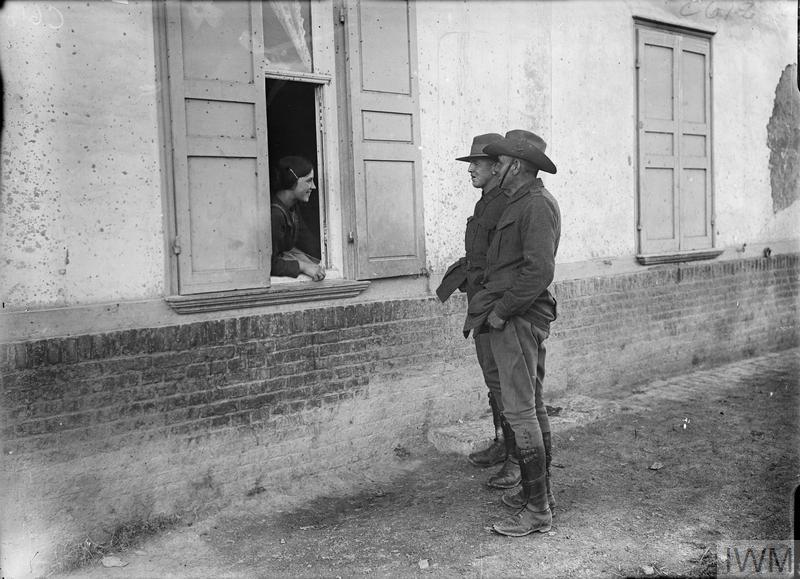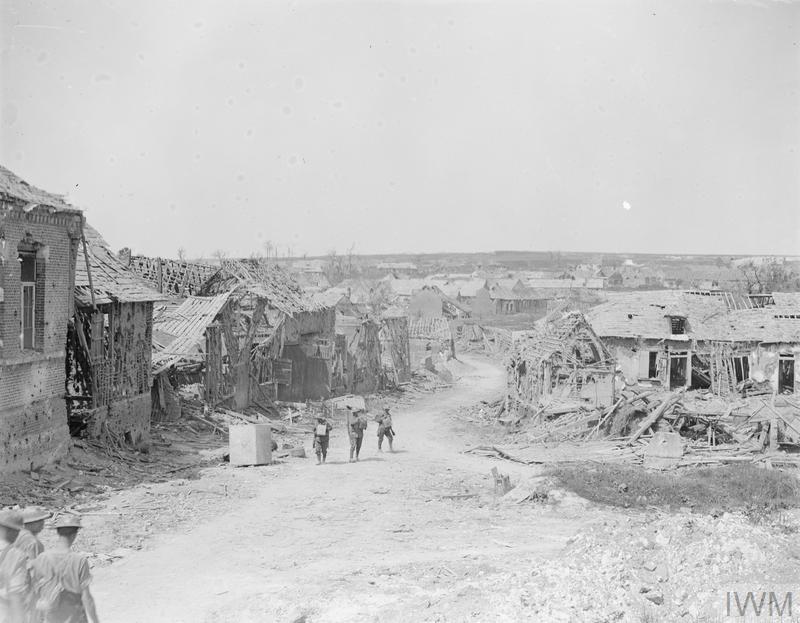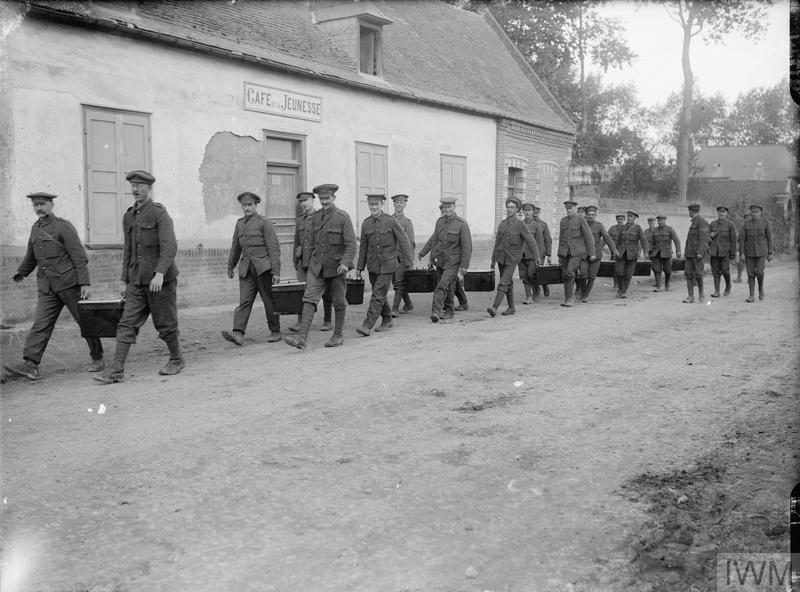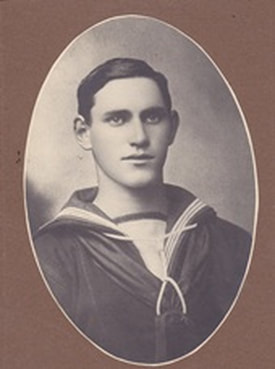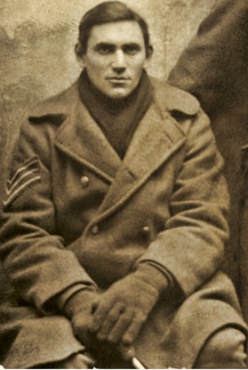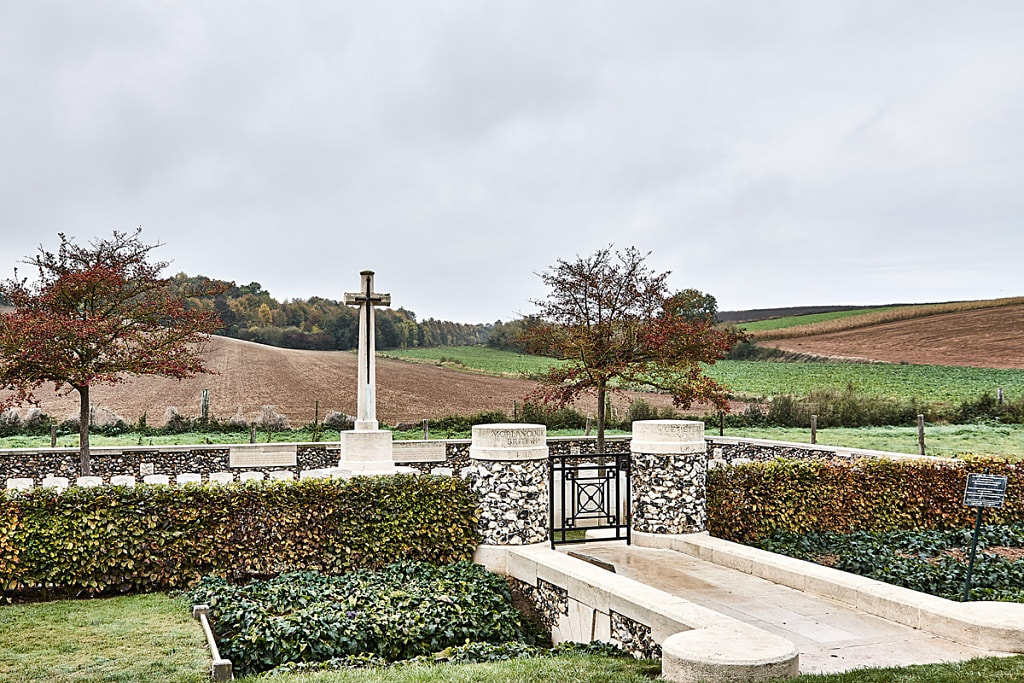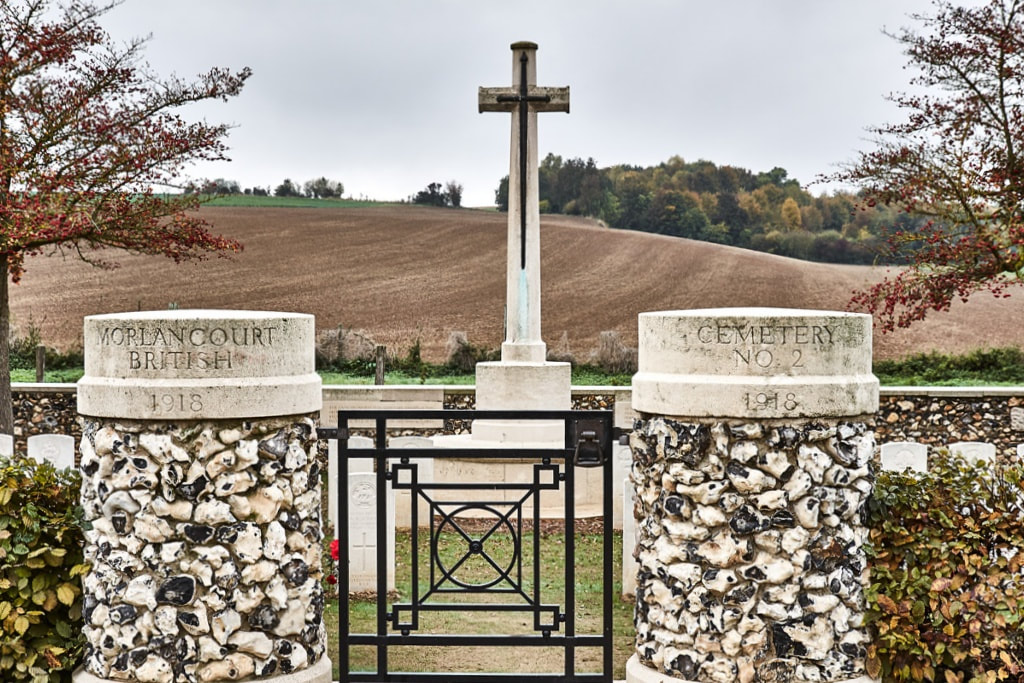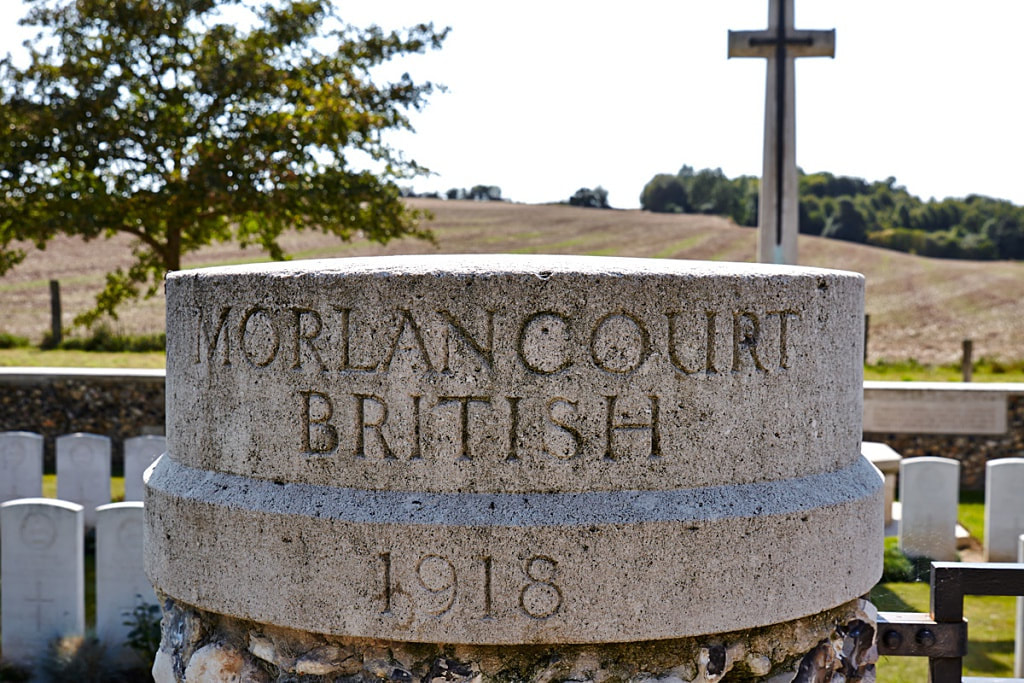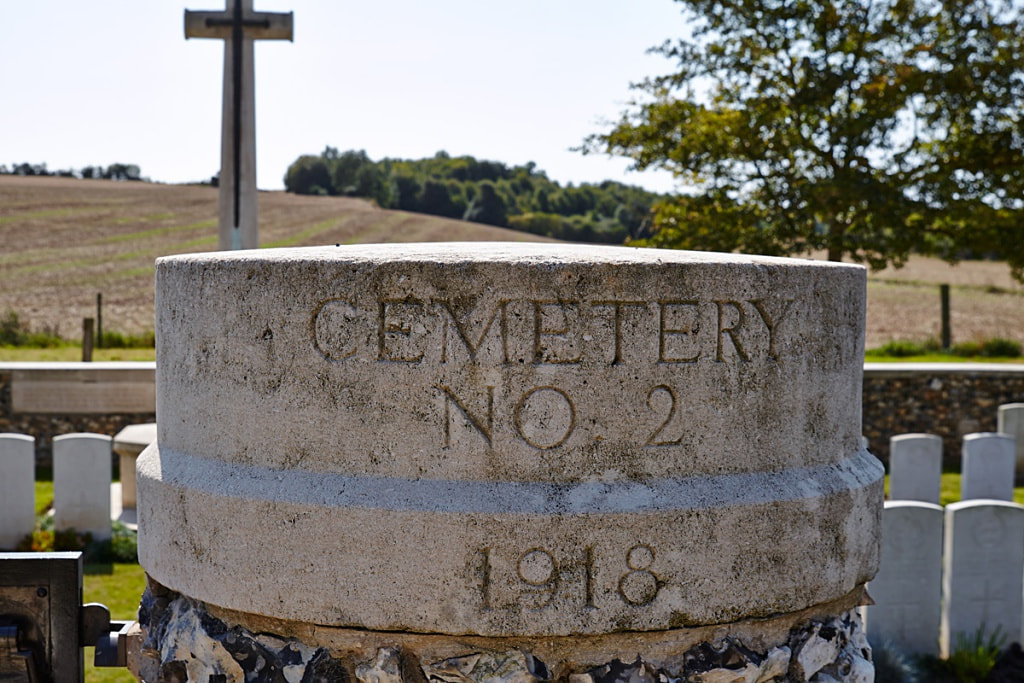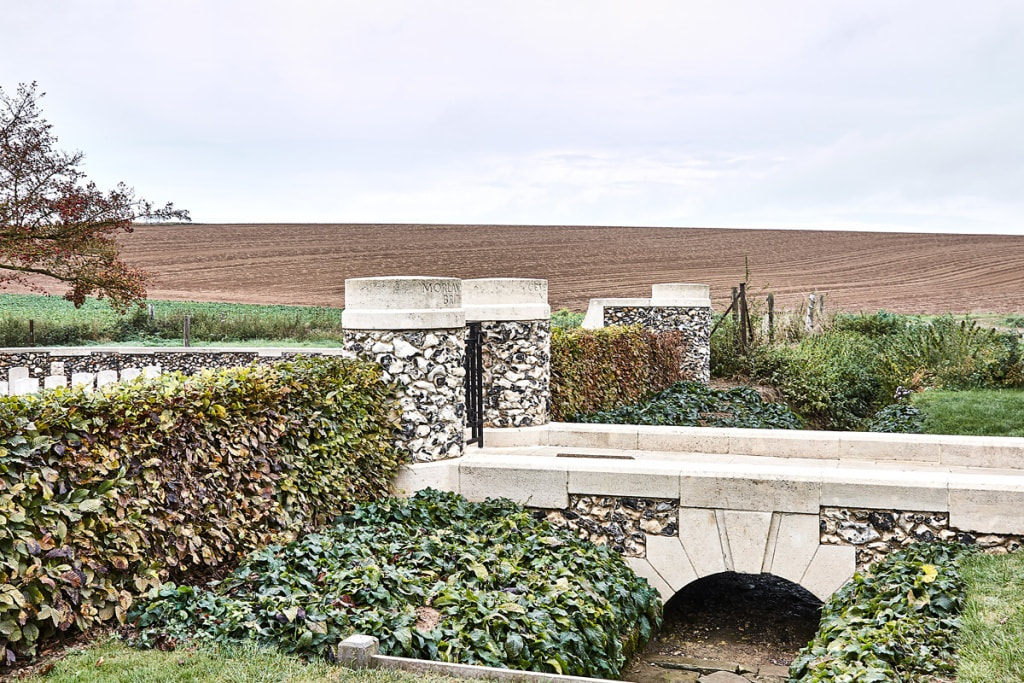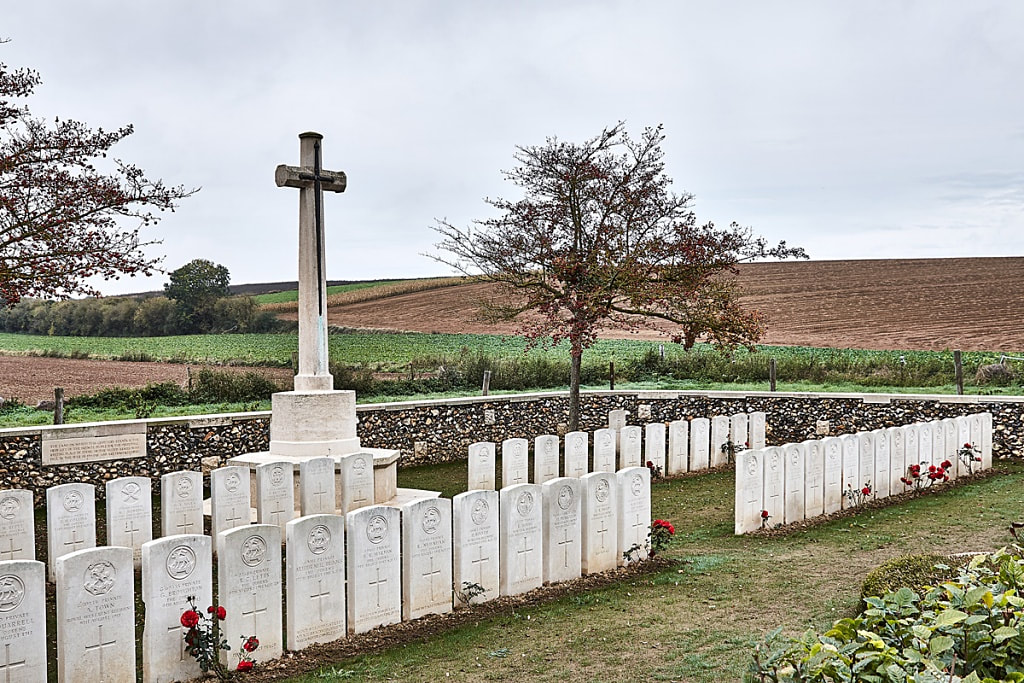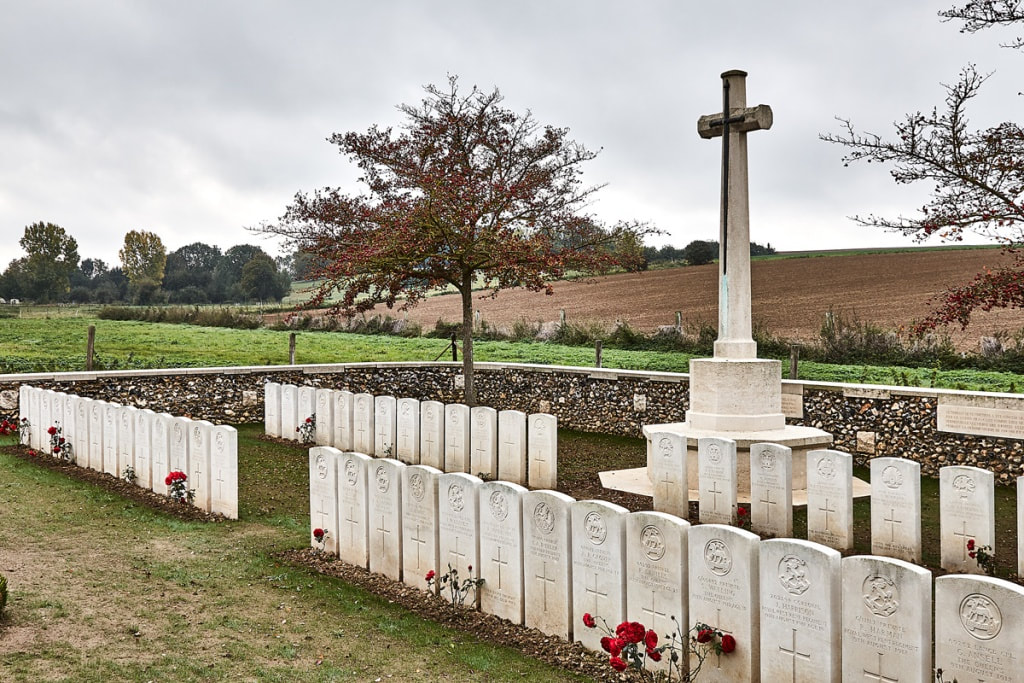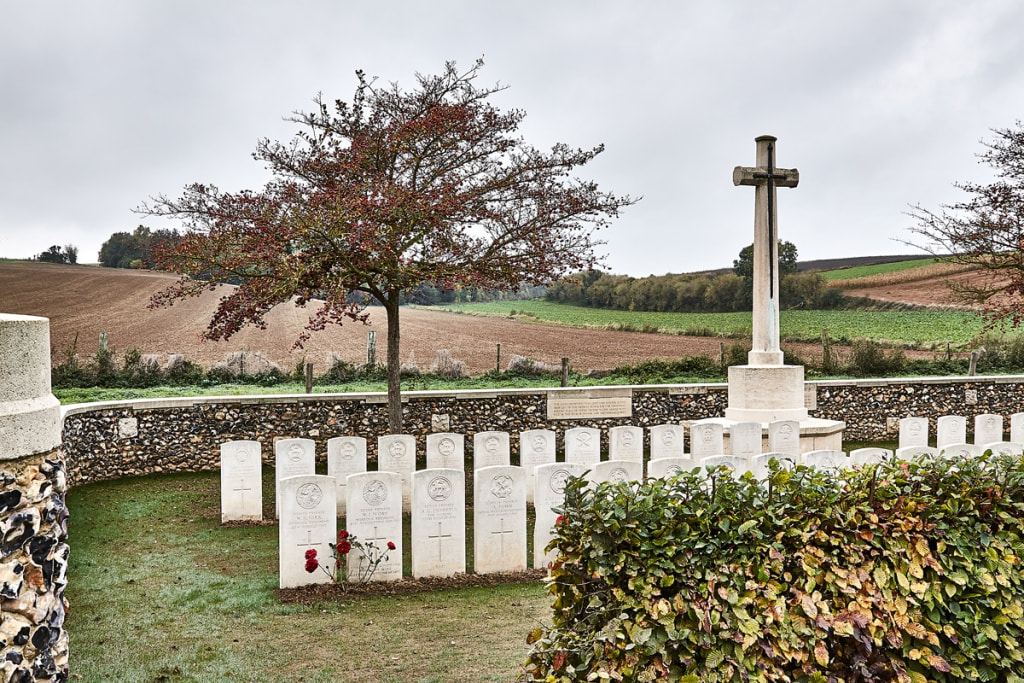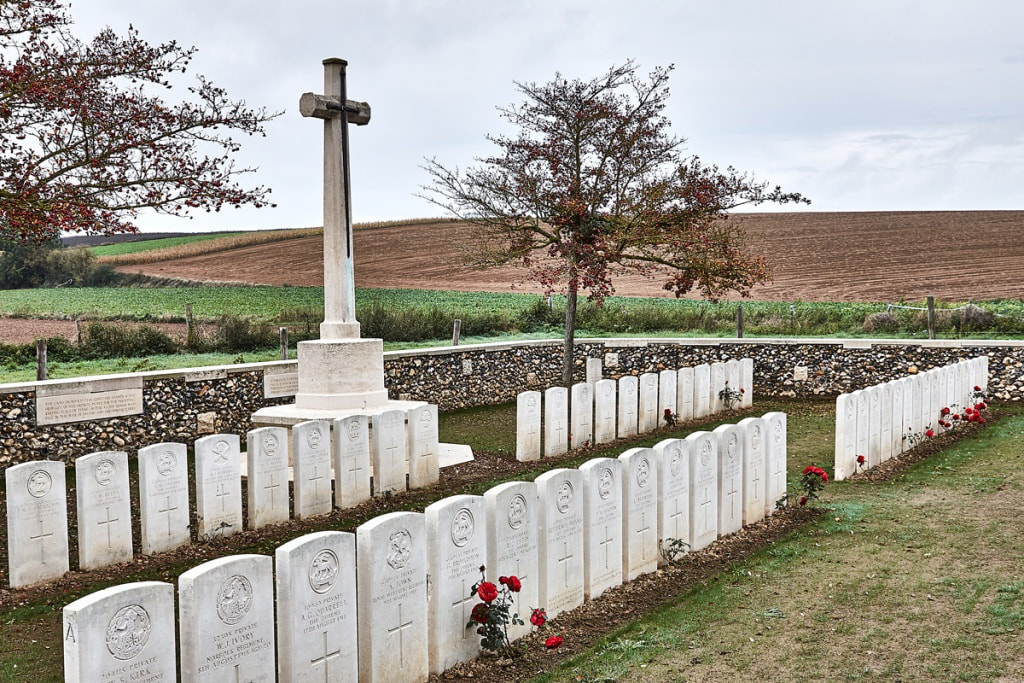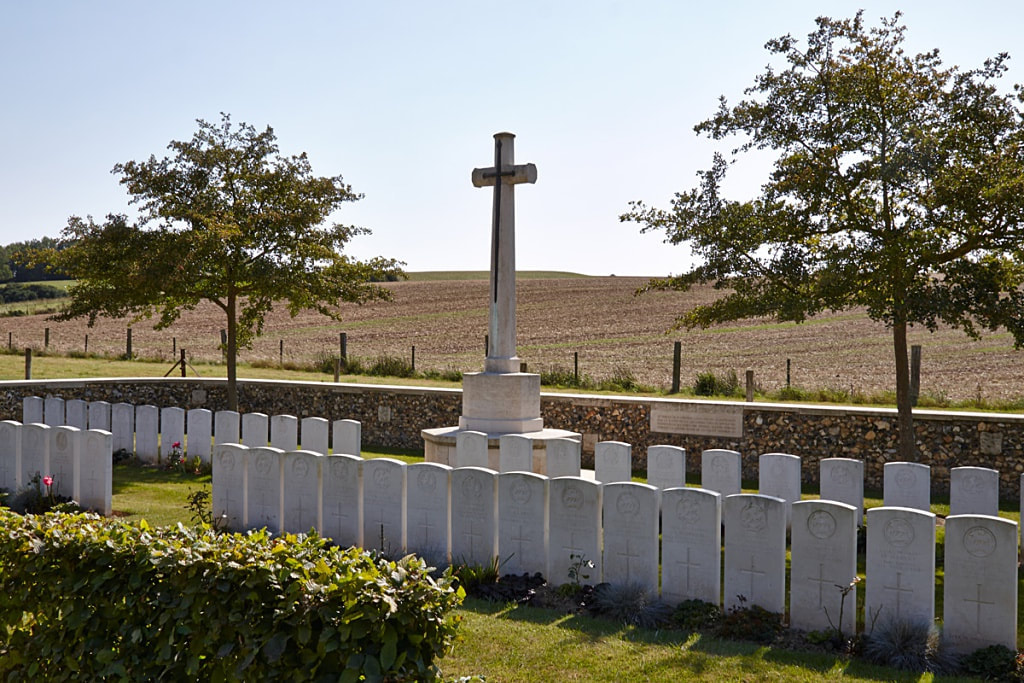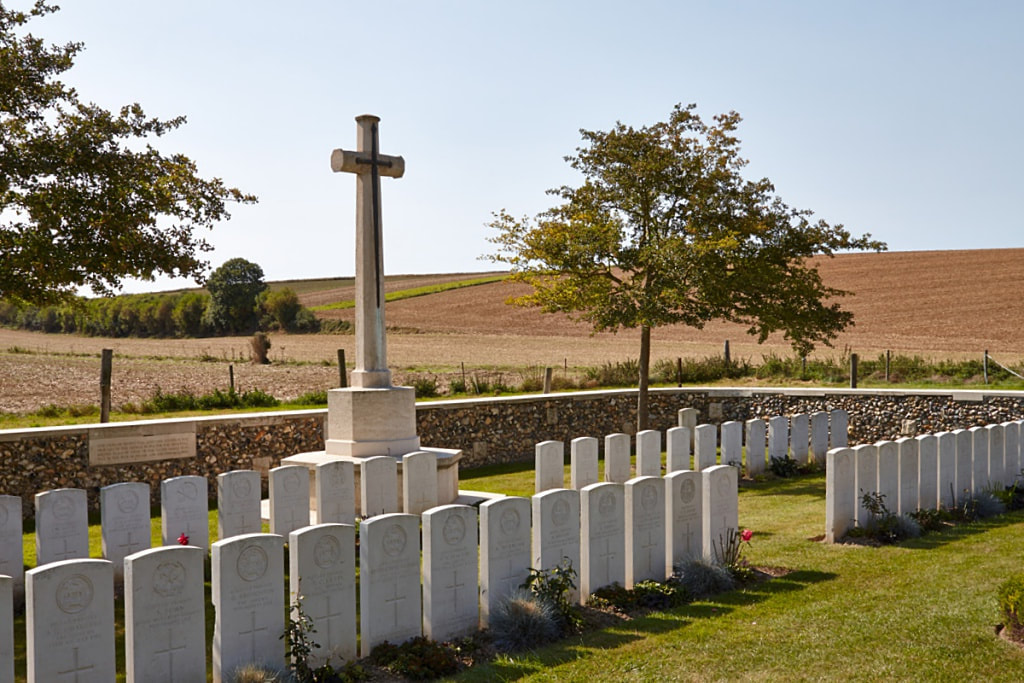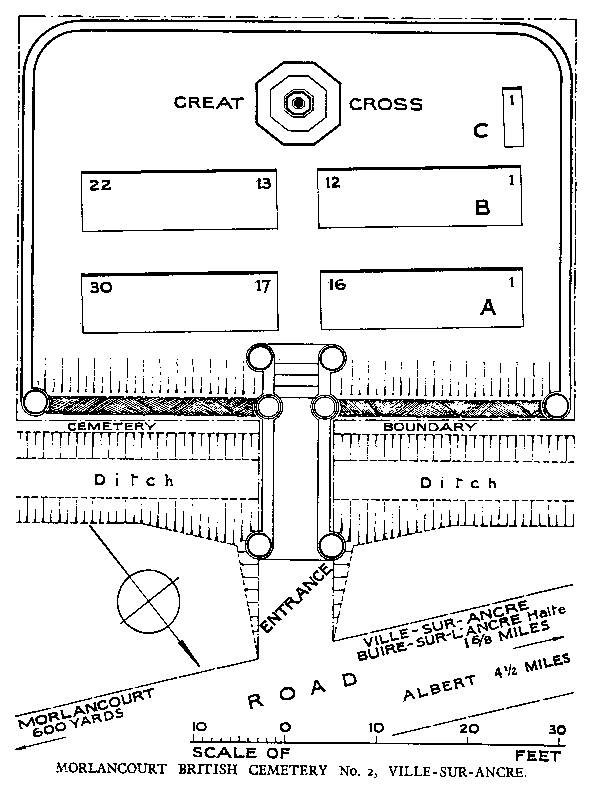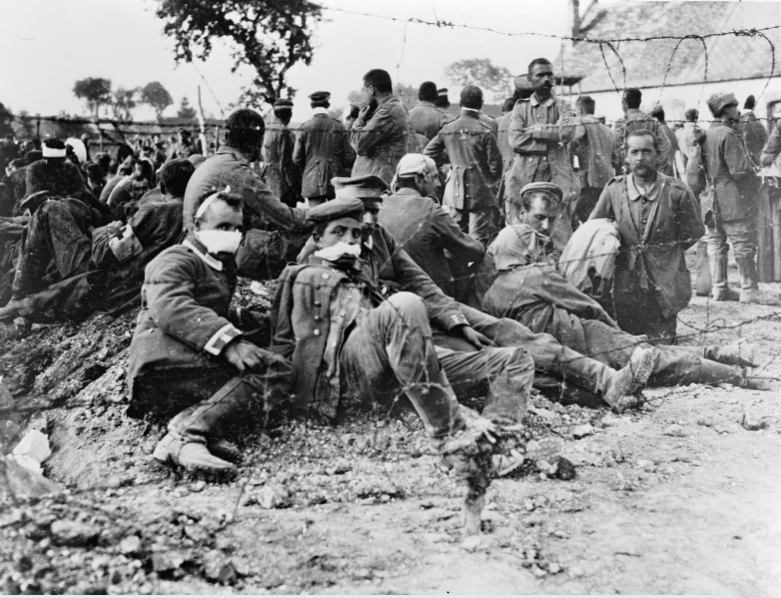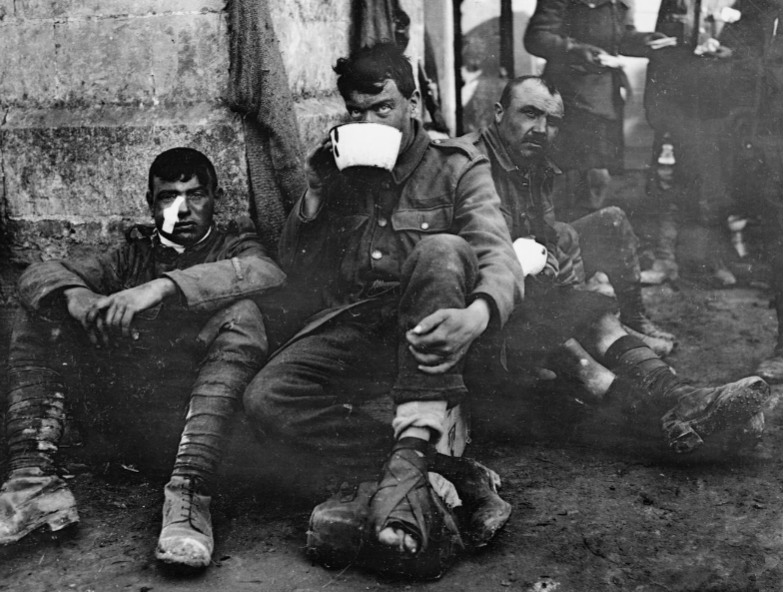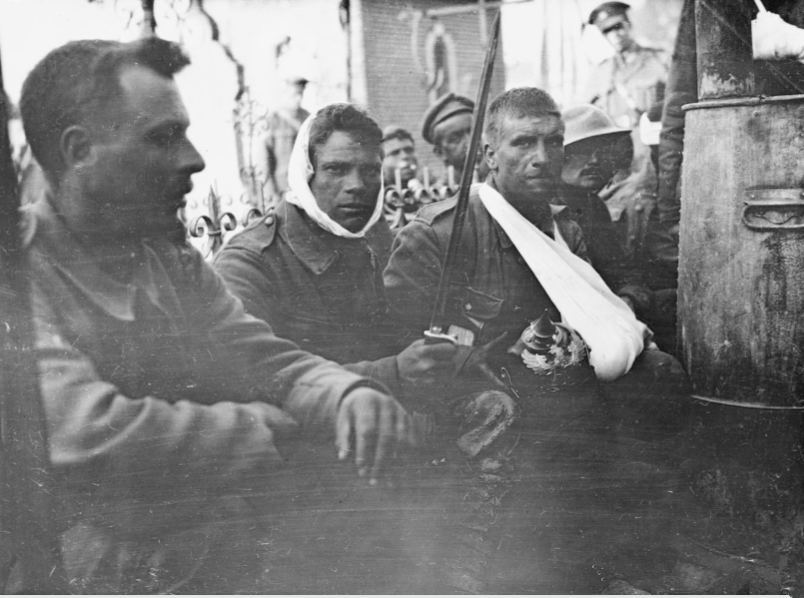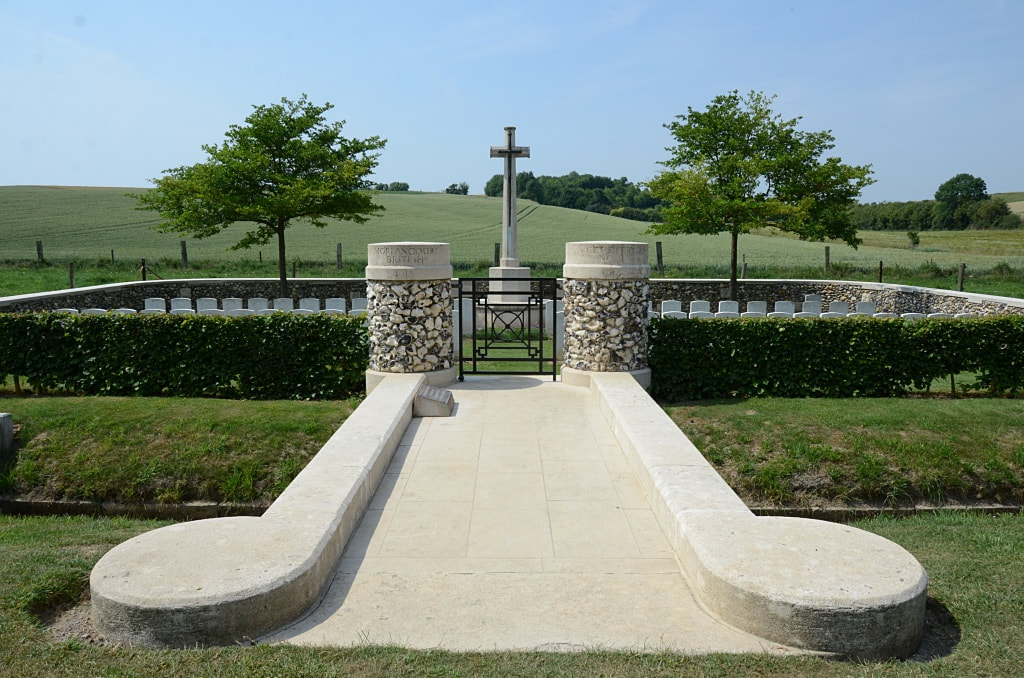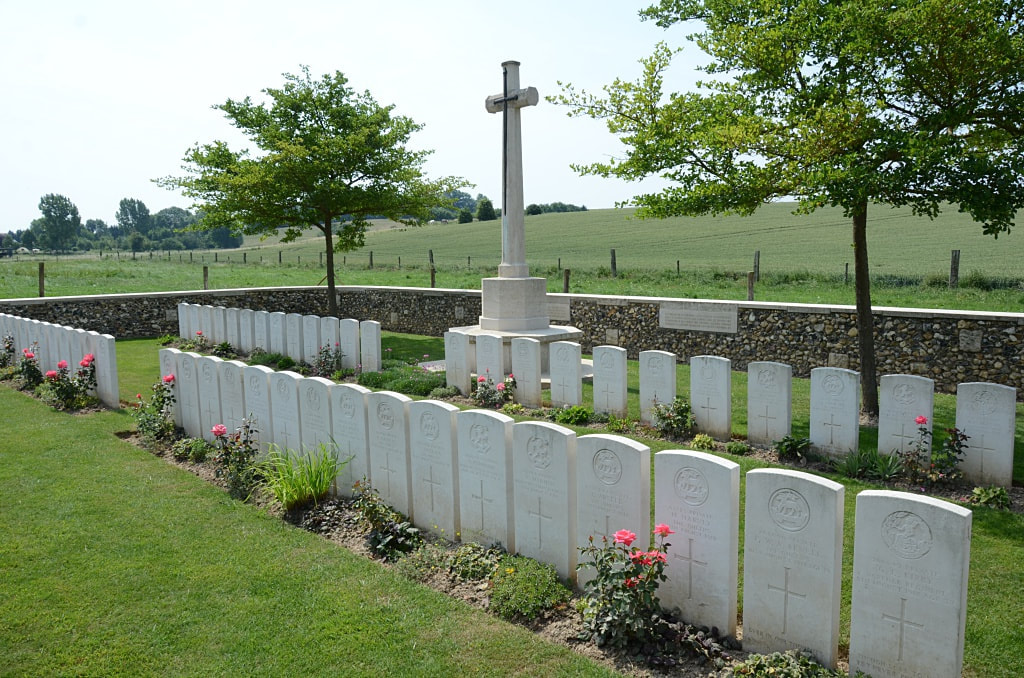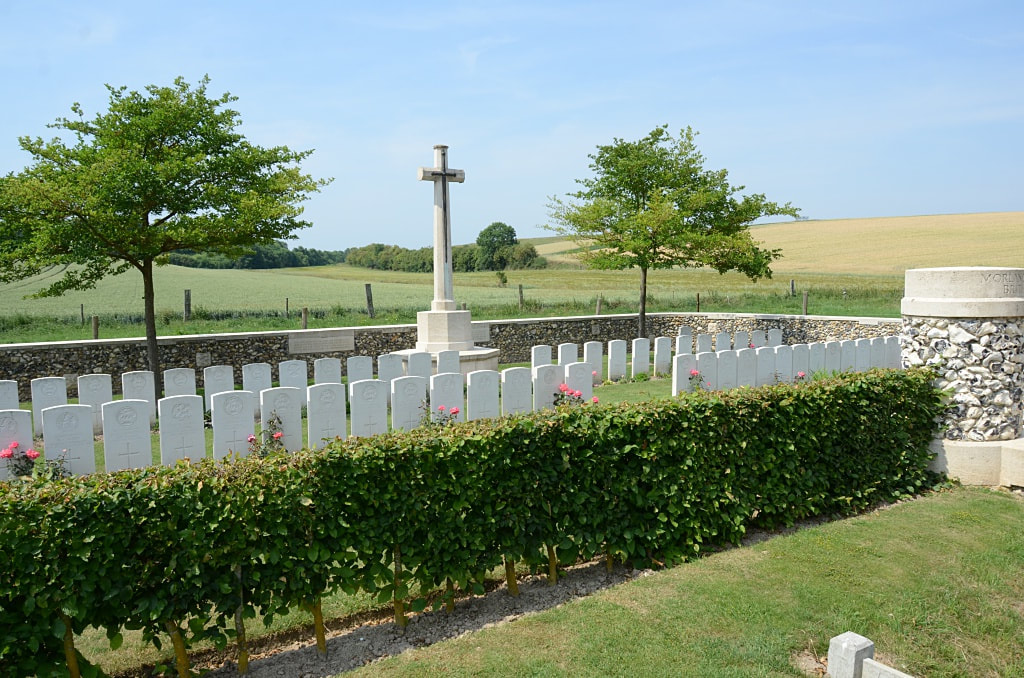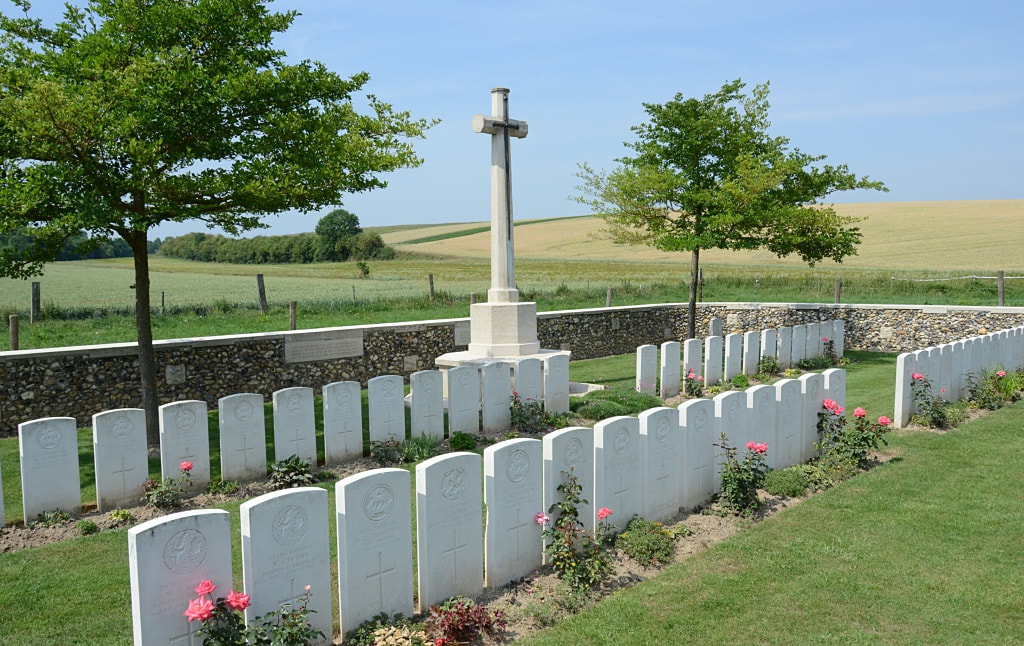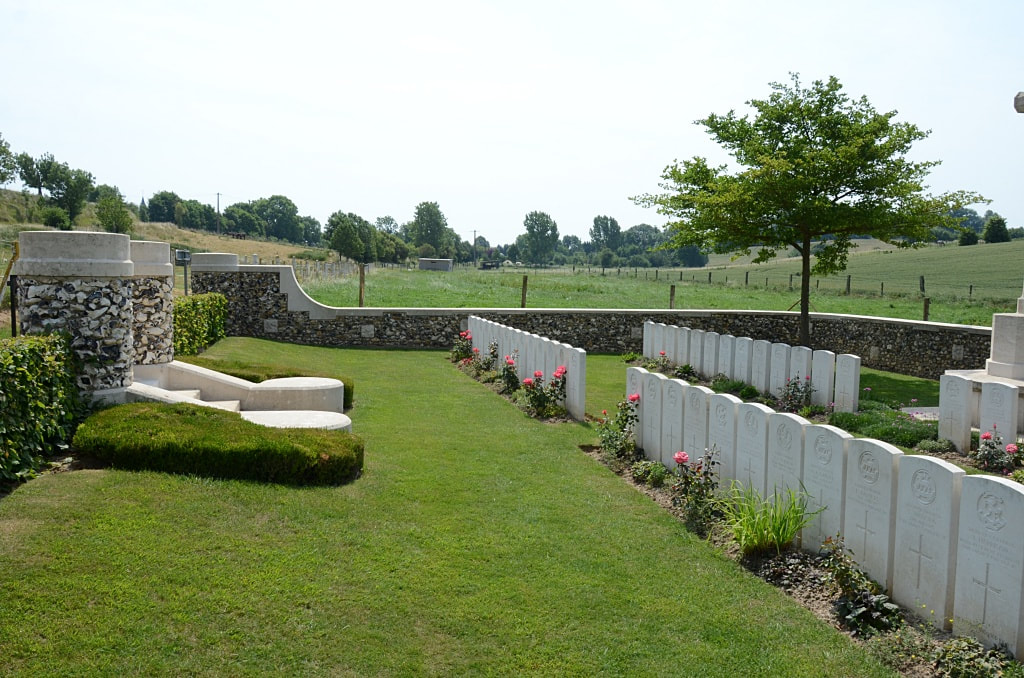MORLANCOURT BRITISH CEMETERY NO. 2
Somme
France
GPS Coordinates - Latitude: 49.95314, Longitude: 2.62186
Location Information
Morlancourt is a village approximately 6.5 kilometres south of Albert.
Morlancourt British Cemetery No.2 is on the north-west side of the village, near the road to Ville-sur-Ancre.
Visiting Information
Wheelchair access to this site with some difficulty.
The register is available in the Mairie on Friday from 18.00 to 19.30
Historical Information
The village of Morlancourt was a quiet place used by field ambulances in 1916, but at the end of March 1918, it was captured by the Germans. Local operations in May and June brought the Allied line nearer to it, but the village remained in German hands until 9 August, when it was taken by the 1/1st Cambridgeshire Regiment and tanks.
Morlancourt British Cemetery No. 2 (for some years called Morlancourt British Cemetery) was made in August 1918.
The cemetery contains 56 First World War burials, two of them unidentified.
Total Burials: 56.
Identified Casualties: United Kingdom 53, Australia 1. Total 54.
Morlancourt is a village approximately 6.5 kilometres south of Albert.
Morlancourt British Cemetery No.2 is on the north-west side of the village, near the road to Ville-sur-Ancre.
Visiting Information
Wheelchair access to this site with some difficulty.
The register is available in the Mairie on Friday from 18.00 to 19.30
Historical Information
The village of Morlancourt was a quiet place used by field ambulances in 1916, but at the end of March 1918, it was captured by the Germans. Local operations in May and June brought the Allied line nearer to it, but the village remained in German hands until 9 August, when it was taken by the 1/1st Cambridgeshire Regiment and tanks.
Morlancourt British Cemetery No. 2 (for some years called Morlancourt British Cemetery) was made in August 1918.
The cemetery contains 56 First World War burials, two of them unidentified.
Total Burials: 56.
Identified Casualties: United Kingdom 53, Australia 1. Total 54.
1196 Sergeant
Vernon Hepburn Drake
30th Bn. Australian Infantry, A. I. F.
22nd June 1918, aged 22.
Row B. 8.
Son of Samuel Michael and Annie Irvin Drake. Native of Newtown, Tasmania.
His headstone bears the inscription; "Until The Day Break And The Shadows Flee Away."
The picture above left, shows him in his Naval Cadets Uniform. His brother Ernest Drake was in the Merchant Navy and was killed 3 months earlier in the English Channel on the S.S."Boorara".
Picture above left courtesy of great niece, Rosanne Lewis
He embarked from Sydney with the 30th Battalion aboard HMAT Beltana (A72). After training in Egypt, his unit deployed to France to serve on the Western Front. After being promoted several times and wounded in action twice, Sgt Drake was killed in action on the evening of the 22/23 June 1918.
2666 Private C. James gave the following information;
"Of A Coy. 3rd Platoon., On night of 22nd June, about 11.30, in front of Morlancourt. He went out into No Man's Land alone, to bring in wounded men from a raid the previous night. In getting through the enemy's wire, a grenade he had in his pocket went off. Two hours after he went out, some of our men went to look for him and saw his body hanging on the wire. They could tell by the wound and his clothes that it was his own bomb that had killed him. We saw his body a week later, still on the wire."
Vernon Hepburn Drake
30th Bn. Australian Infantry, A. I. F.
22nd June 1918, aged 22.
Row B. 8.
Son of Samuel Michael and Annie Irvin Drake. Native of Newtown, Tasmania.
His headstone bears the inscription; "Until The Day Break And The Shadows Flee Away."
The picture above left, shows him in his Naval Cadets Uniform. His brother Ernest Drake was in the Merchant Navy and was killed 3 months earlier in the English Channel on the S.S."Boorara".
Picture above left courtesy of great niece, Rosanne Lewis
He embarked from Sydney with the 30th Battalion aboard HMAT Beltana (A72). After training in Egypt, his unit deployed to France to serve on the Western Front. After being promoted several times and wounded in action twice, Sgt Drake was killed in action on the evening of the 22/23 June 1918.
2666 Private C. James gave the following information;
"Of A Coy. 3rd Platoon., On night of 22nd June, about 11.30, in front of Morlancourt. He went out into No Man's Land alone, to bring in wounded men from a raid the previous night. In getting through the enemy's wire, a grenade he had in his pocket went off. Two hours after he went out, some of our men went to look for him and saw his body hanging on the wire. They could tell by the wound and his clothes that it was his own bomb that had killed him. We saw his body a week later, still on the wire."
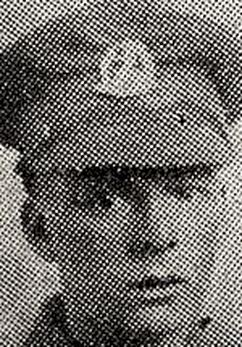
44399 Private
Walter William Head
9th Bn. Essex Regiment
10th August 1918, aged 20.
Plot B. 10.
Son of Mrs. Hannah Head, of 50, Tower Hamlets Rd., Dover.
His headstone bears the inscription; "Rest In Peace."
Walter William Head
9th Bn. Essex Regiment
10th August 1918, aged 20.
Plot B. 10.
Son of Mrs. Hannah Head, of 50, Tower Hamlets Rd., Dover.
His headstone bears the inscription; "Rest In Peace."
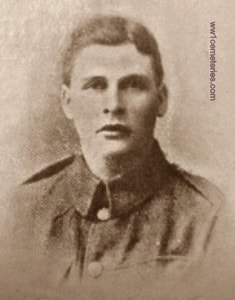
10969 Private
Alfred Gordon Quarrell
6th Bn. The Queen's (Royal West Surrey Regiment)
12th August 1918, aged 22.
Row A. 28.
Son of Alfred Quarrell, of 3, High St., Brecon.
His headstone bears the inscription; "R. I. P."
Alfred Gordon Quarrell
6th Bn. The Queen's (Royal West Surrey Regiment)
12th August 1918, aged 22.
Row A. 28.
Son of Alfred Quarrell, of 3, High St., Brecon.
His headstone bears the inscription; "R. I. P."
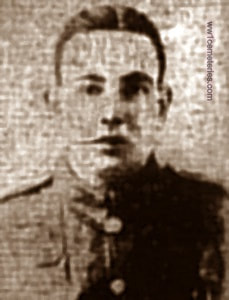
108000 Private
Frederick William A. Revell
6th Bn. The Queen's (Royal West Surrey Regiment)
10th August 1918, aged 19.
Row A. 2
Son of Mr. and Mrs. A. Revell, of The Farriers Arms, Abingdon Rd., Oxford.
His headstone bears the inscription; "Ever In Our Thoughts."
Frederick William A. Revell
6th Bn. The Queen's (Royal West Surrey Regiment)
10th August 1918, aged 19.
Row A. 2
Son of Mr. and Mrs. A. Revell, of The Farriers Arms, Abingdon Rd., Oxford.
His headstone bears the inscription; "Ever In Our Thoughts."
Cemetery pictures in this gallery © Geerhard Joos
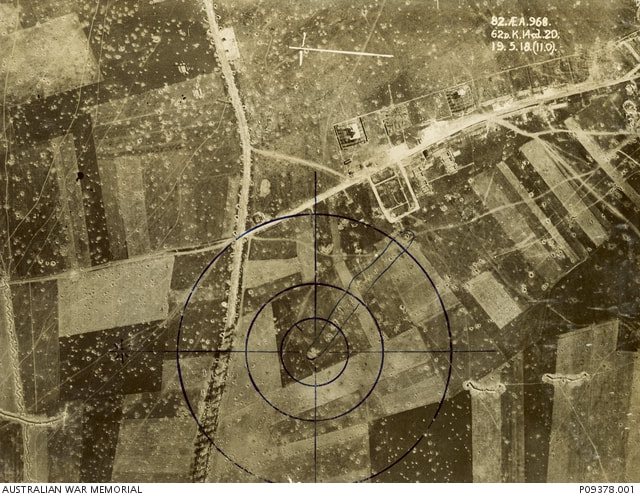
Aerial reconnaissance image of the Villers-sur-Ancre/Morlancourt area, taken to check the extent of the Australian advance following the attack on the morning of 19 May 1918. The image was taken by Lieutenants Tom Latham Baillieu (pilot) and Edward Fearnley Rowntree (observer) from an RE8 aircraft of No. 3 Squadron AFC. The image is marked with a 'clock face' to allow for the plotting of the fall of artillery shells.

